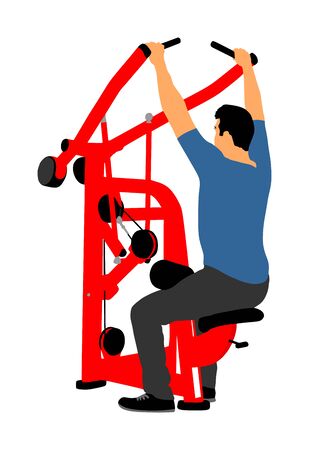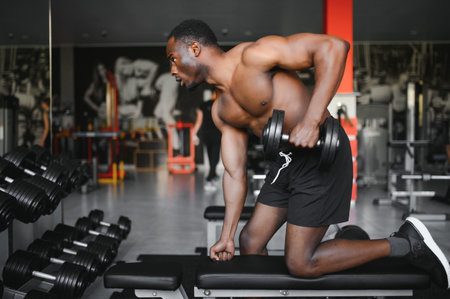1. Introduction to Evidence-Based Shoulder Rehabilitation
Shoulder injuries are among the most common issues seen by physical therapists across the United States, affecting people of all ages and activity levels. In American physical therapy, using evidence-based practice is considered the gold standard for providing safe, effective, and efficient care. This means that therapeutic exercise programs for shoulder rehabilitation are designed based on the latest research, clinical expertise, and patient preferences.
Why Evidence-Based Practice Matters
Evidence-based practice (EBP) helps ensure that patients receive care that has been proven to work. In the U.S., physical therapists rely on EBP to reduce recovery times, improve outcomes, and minimize the risk of reinjury. By using protocols supported by scientific studies, therapists can confidently guide patients through their rehab journey.
Key Goals of Shoulder Rehabilitation
The main objectives in any shoulder rehab program are:
- Pain reduction
- Restoring range of motion
- Improving strength and stability
- Returning to daily activities or sports
Therapeutic exercises play a central role in achieving these goals. These exercises help patients regain function while protecting healing tissues.
The Role of Therapeutic Exercise Programs
In American clinics, therapeutic exercise programs are tailored to each individual’s needs. Therapists select exercises based on injury type, severity, and personal goals. Below is a quick overview of how these programs typically progress:
| Rehab Phase | Main Focus | Example Exercises |
|---|---|---|
| Acute/Early Phase | Pain management & gentle mobility | Pendulum swings, passive range-of-motion (PROM) |
| Intermediate Phase | Active motion & early strengthening | Active-assisted range-of-motion (AAROM), isometrics |
| Advanced Phase | Strengthening & functional training | Resistance bands, overhead reaching tasks |
| Return-to-Activity Phase | Sport or work-specific movements | Plyometrics, advanced stability drills |
Cultural Considerations in American Physical Therapy
American patients often value clear communication, shared decision-making, and a focus on returning to active lifestyles—whether that means getting back to work, recreational sports, or family life. Therapists incorporate these values when designing and teaching evidence-based exercise protocols.
2. Common Shoulder Conditions and Indications for Rehab
Shoulder injuries are a leading cause of pain and functional limitations for many Americans, whether due to sports, work, or daily activities. Understanding the most common shoulder conditions seen in clinics across the U.S. helps guide effective therapeutic exercise programs tailored to each patients needs. Below is an overview of prevalent shoulder injuries and when rehab is recommended.
Prevalent Shoulder Injuries in the United States
| Condition | Description | Typical Causes |
|---|---|---|
| Rotator Cuff Tears | Tears or strains of one or more tendons in the rotator cuff muscles, often causing pain and weakness with arm movement. | Repetitive overhead activity (sports, manual labor), aging, falls |
| Shoulder Impingement | Narrowing of space under the acromion causes tendons to be pinched during movement, resulting in pain especially with lifting. | Overhead motions, poor posture, muscle imbalance |
| Frozen Shoulder (Adhesive Capsulitis) | Stiffness and loss of range of motion due to thickening and tightening of the shoulder capsule. | Prolonged immobility, injury, diabetes, unknown reasons |
| Shoulder Instability/Dislocation | The upper arm bone pops out of the shoulder socket, either partially or completely; may become recurrent. | Trauma (falls, sports injuries), joint laxity |
| Bursitis/Tendinitis | Inflammation of bursae or tendons around the shoulder joint, leading to pain and swelling. | Repetitive use, overuse injuries, direct pressure or trauma |
Clinical Indications for Therapeutic Exercises
Therapeutic exercise is a cornerstone of shoulder rehabilitation in American physical therapy practice. The main goals are to reduce pain, restore strength and mobility, and improve function. Exercise prescriptions are tailored based on the specific diagnosis and severity. Here’s when rehab is typically indicated:
- Pain with movement: Exercises can help control pain while gradually restoring mobility.
- Lack of strength: Targeted strengthening helps rebuild support for the joint after injury or surgery.
- Loss of range of motion: Gentle stretching and mobilization exercises prevent stiffness and promote healing.
- Poor function: Functional training restores ability to perform daily activities safely and comfortably.
- Post-surgical recovery: Customized protocols are followed after rotator cuff repair or other procedures to ensure safe progression.
Key Considerations for U.S. Rehab Protocols
American rehab specialists emphasize evidence-based protocols that combine gradual loading, patient education, and return-to-activity planning. They work closely with patients to set realistic goals—whether returning to work, sports, or simply reaching overhead without pain. Early intervention with tailored exercises has been shown to speed up recovery and prevent future injuries in most cases.

3. Core Therapeutic Exercise Protocols Used in the States
When it comes to shoulder rehabilitation in the United States, physical therapists and rehabilitation professionals rely on evidence-based exercise protocols that are both effective and easy to follow. These protocols are designed based on research, clinical experience, and guidelines from organizations like the American Physical Therapy Association (APTA). Here’s a breakdown of the most commonly used therapeutic exercise programs for shoulder rehab, with clear explanations of how and why they work.
Guidelines for Shoulder Rehabilitation
The general approach to shoulder rehab is gradual and tailored to each individual’s needs and recovery stage. Here are key guidelines:
- Start with pain-free movement: Early exercises focus on restoring gentle motion without causing pain.
- Progress to strength and stability: As healing progresses, more challenging exercises are added to rebuild muscle and support joint function.
- Monitor for signs of overuse or irritation: Therapists adjust the program if there’s increased pain or swelling.
Evidence-Based Progression Models
Physical therapists in the States often use step-by-step progression models to guide patients safely through recovery. Below is a simplified table showing typical stages and examples of exercises:
| Stage | Main Goals | Sample Exercises |
|---|---|---|
| Early Phase (Acute) | Reduce pain & swelling Restore range of motion |
Pendulum swings Passive arm lifts Scapular retraction |
| Middle Phase (Subacute) | Increase flexibility Begin light strengthening |
Cane-assisted stretches Isometric shoulder holds External rotation with resistance band |
| Late Phase (Advanced) | Build strength & endurance Return to activity/sport |
Wall push-ups Shoulder abduction with dumbbells Functional reaching drills |
The Rationale Behind Exercise Selection
The choice of specific exercises depends on factors like the type of shoulder injury, whether surgery was involved, and the patient’s goals. Here’s why certain exercises are favored:
- Pendulum exercises: These use gravity to gently mobilize the joint without muscle strain.
- Banded rotations and isometrics: Help activate rotator cuff muscles safely before adding heavy resistance.
- Functional movements: Mimic daily activities or sports motions, making sure patients regain practical use of their shoulders.
A Patient-Friendly Approach
In American clinics, therapists educate patients on proper form, safety cues (like “no sharp pain”), and home program compliance. They also emphasize communication—patients are encouraged to report what feels good or uncomfortable so programs can be adjusted as needed. This individualized care helps ensure better outcomes and faster return to normal life.
4. Adaptation and Customization for Patient-Centered Care
In the United States, shoulder rehabilitation is not a one-size-fits-all approach. Therapists understand that every patient has unique needs, goals, and backgrounds. Customizing therapeutic exercise programs is a key part of evidence-based care. This means that therapists consider several important factors to make sure each plan is right for the individual.
How Therapists Personalize Shoulder Rehab
Therapists in the U.S. use a patient-centered approach when designing exercise programs. Here are some ways they adapt plans:
- Age: Exercises are chosen based on whether the patient is a young athlete, an active adult, or a senior who may need gentler movements.
- Activity Level: The rehab plan considers if the person is involved in sports, has a physically demanding job, or leads a more sedentary lifestyle.
- Occupation: For people whose work involves lifting, repetitive overhead motions, or desk jobs, exercises target muscles needed for those specific tasks.
- Cultural Factors: Therapists respect cultural beliefs about health and healing, and adjust communication styles and exercise choices as needed.
Examples of Program Adaptations
| Patient Type | Key Considerations | Exercise Modifications |
|---|---|---|
| Youth Athlete | High physical activity; risk of re-injury | Plyometrics; sport-specific drills; faster progression |
| Older Adult | Joint health; balance issues | Gentle range-of-motion; resistance bands; fall prevention focus |
| Manual Laborer | Lifting; repetitive movements at work | Strengthening rotator cuff; functional movement training |
| Sedentary Worker | Poor posture; muscle imbalances | Postural correction; stretching tight muscles; ergonomic advice |
| Culturally Diverse Patient | Differing health beliefs; language barriers | Culturally appropriate education materials; family involvement in care plan if desired |
The Role of Shared Decision-Making
A big part of American rehab culture is shared decision-making. Therapists encourage patients to discuss their personal goals, concerns, and preferences. Together, they set realistic expectations and choose exercises that fit into daily life. This partnership helps patients stay motivated and improves outcomes because the program feels meaningful and manageable.
5. Outcome Measurement and Best Practice Recommendations
How to Evaluate Patient Progress in Shoulder Rehabilitation
Measuring progress is a key part of any successful shoulder rehabilitation program. In the United States, therapists use a variety of standardized tools and hands-on assessments to track improvement, set goals, and adjust treatment plans.
Commonly Used Outcome Measures in the States
Below is a table summarizing widely used outcome measures for shoulder rehab in U.S. clinical practice:
| Outcome Measure | Main Focus | Typical Use Case |
|---|---|---|
| Shoulder Pain and Disability Index (SPADI) | Pain, functional limitations | General assessment for pain and daily activities |
| Disabilities of the Arm, Shoulder and Hand (DASH) | Upper extremity function, symptoms | Broader evaluation for arm/shoulder conditions |
| American Shoulder and Elbow Surgeons (ASES) Score | Pain, function | Surgical and non-surgical outcomes tracking |
| Range of Motion (ROM) | Flexibility, movement quality | Manual measurement with goniometer or inclinometer |
| Manual Muscle Testing (MMT) | Strength assessment | Checks muscle recovery over time |
| Numeric Pain Rating Scale (NPRS) | Pain intensity | Quick check at each session or weekly review |
Best Practice Recommendations for Clinicians
- Select the right tool: Choose an outcome measure that fits your patient’s diagnosis and daily needs. For example, SPADI is great for rotator cuff problems, while DASH works well for broader upper limb issues.
- Track regularly: Assess patients at baseline, mid-point, and discharge to clearly see progress. Share these results with your patient—they’ll appreciate seeing improvement!
- Combine objective and subjective data: Mix hands-on tests like ROM and MMT with patient-reported surveys for a full picture of recovery.
- Use results to guide care: If progress stalls, tweak the exercise program or consult other healthcare providers as needed.
- Cultural sensitivity matters: Make sure questionnaires are easy to understand and relevant to your patient’s lifestyle in the States. Offer translations if English isn’t their first language.
Troubleshooting Common Challenges
- If a patient is not progressing as expected, revisit exercise technique, ensure compliance with home programs, or consider additional imaging/referral if red flags are present.
- Document all findings—good records help coordinate care with physicians or insurance companies.
Summary Table: Key Steps for Optimal Recovery Monitoring in Shoulder Rehab Programs in the U.S.
| Step | Description/Example Tools |
|---|---|
| Initial Assessment | DASH, SPADI, ROM, MMT, pain scale |
| Mid-Rehab Check-In (2-4 weeks) | DASH/SPADI follow-up, ROM/MMT retest, discuss goals/progress with patient |
| Treatment Adjustments as Needed | Tweak exercises based on outcome scores & patient feedback |
| Discharge Evaluation | DASH/SPADI final score; confirm safe return to work/sports |
This evidence-based approach helps clinicians across the United States deliver personalized care and achieve the best possible results for every shoulder rehab patient.


